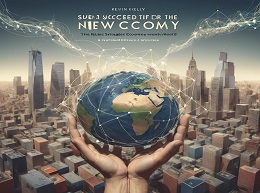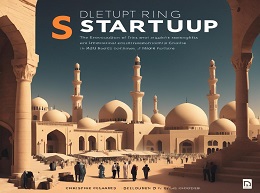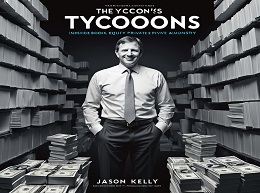New Rules for the New Economy: 10 Radical Strategies for a Connected World

Navigating the New Economy Landscape
"New Rules for the New Economy" by Kevin Kelly presents a groundbreaking framework for understanding and thriving in the interconnected world of the 21st century. This review delves into the key concepts and radical strategies proposed in the book, offering readers insights into how to adapt and succeed in the new economy landscape.
Embracing Networked Dynamics: The Power of Connectivity
Kelly argues that the new economy is characterized by networked dynamics, where connections and relationships are key drivers of success. Subheadings like "The Power of Networks" and "Embracing Connectivity" explore how businesses and individuals can leverage network effects to create value and drive innovation. Examples of companies like Airbnb and Uber demonstrate the transformative impact of networked platforms and the opportunities they present for disrupting traditional industries.
Abundance Mindset: Shifting from Scarcity to Surplus
In the new economy, abundance rather than scarcity is the prevailing mindset, with technology enabling the creation and distribution of abundance at scale. Subheadings like "The Abundance Mindset" and "Creating Value in a Connected World" delve into how businesses can capitalize on abundance to create value for customers and drive growth. Examples of companies like Google and Wikipedia showcase the power of abundance-based business models and the democratization of access to information and resources.
Long-Tail Economics: Capitalizing on Niche Markets
The long tail phenomenon describes the shift from a focus on hits to a focus on niche markets, enabled by the internet's ability to connect buyers and sellers across diverse interests and preferences. Subheadings like "The Long Tail Effect" and "Capitalizing on Niche Markets" explore how businesses can tap into the long tail to reach niche audiences and unlock new revenue streams. Examples of companies like Netflix and Amazon demonstrate the power of long-tail economics in driving profitability and customer satisfaction.
Participatory Culture: Harnessing Collective Intelligence
The rise of participatory culture has empowered individuals to contribute, collaborate, and co-create value in unprecedented ways. Subheadings like "The Wisdom of Crowds" and "Harnessing Collective Intelligence" delve into how businesses can tap into the collective wisdom and creativity of their communities to drive innovation and problem-solving. Examples of platforms like Wikipedia and GitHub illustrate the transformative impact of participatory culture in democratizing knowledge and innovation.
Co-evolutionary Feedback Loops: Learning and Adapting in Real Time
In the new economy, businesses must embrace co-evolutionary feedback loops to continuously learn, adapt, and innovate in response to changing market dynamics. Subheadings like "Feedback Loops and Iterative Design" and "Agile and Adaptive Organizations" explore how businesses can harness feedback to drive iterative improvements and stay ahead of the curve. Examples of companies like Spotify and Tesla showcase the power of co-evolutionary feedback loops in driving product innovation and market leadership.
Thriving in the New Economy
"New Rules for the New Economy" offers a visionary roadmap for navigating the complexities of today's interconnected world. Through radical strategies and real-world examples, Kelly provides readers with a blueprint for embracing connectivity, abundance, and participatory culture to drive innovation and success in the new economy landscape. Whether you're a business leader, entrepreneur, or innovator, this book offers invaluable insights and inspiration for thriving in the connected world of the 21st century.












